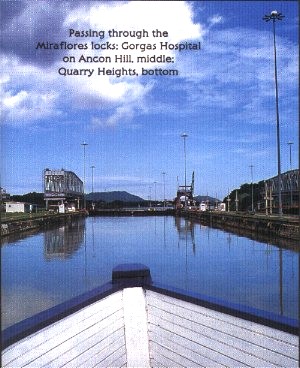 |
The United States took over the construction effort in Panama in 1904,
spurred by the unalloyed conviction of Teddy Roosevelt that the objective was both
possible and just. Included in that drama were artful if less appreciated efforts by
architects and others to accommodate a difficult terrain to the needs of people. They
created in the process a unique place neither Yankee nor Panamanian: "the zone."
Presidents McKinley and Taft had also been instrumental in the canal's construction, but
the most striking single photograph associated with it shows Teddy, wearing a white linen
suit and a white Panama hat, at the controls of the huge steam shovel in the cut,
optimistic, impatient, seemingly oblivious to workers arrayed about him like extras in the
ultimate industrial drama.
Great was the world's appreciation, in 1914, when the
colossal ditch opened for business. Digging it had involved the efforts of as many as
50,000 men at a time; in all, roughly 5,600 of them died of disease and mishaps, including
the extreme prejudice of dynamite. An unimaginable 225 million cubic yards of earth
and rock had been displaced; islands were made of it off Panama City; The United States
became an instant world power of undisputed energy and vision, and in the 85 years since,
the canal has helped to consolidate the
United States’ economic and military might. |